As summer starts to wind down, it’s time to start winterizing your pool for the colder months. There are many benefits to closing your pool for the winter. Doing the right prep before winter pool closing makes it easier to enjoy fun in the sun once warm weather returns. Read this guide to understand when and how to close your swimming pool this winter.
When Should I Start Winterizing My Pool?
At the soonest, experts suggest waiting to winterize until temperatures regularly drop below 65 degrees Fahrenheit.
However, waiting longer until your pool water is below 50 degrees Fahrenheit is ideal since algae growth stops at around 40 degrees Fahrenheit.
How Do I Winterize My Pool?
There are some basic steps to follow when closing your pool ahead of the colder months. Make sure to do these 8 things before winter closing:
1. Remove Pool Accessories
Prolonged exposure to chemicals can ruin the finish of accessories like ladders and rails, and even cause them to rust. Remove pool accessories, hose them down, and store them away during winter.
Removing accessories also ensures your cover is as secure and tight as possible, preventing leaves, twigs, sediment, and other contaminants from slipping in through any gaps.
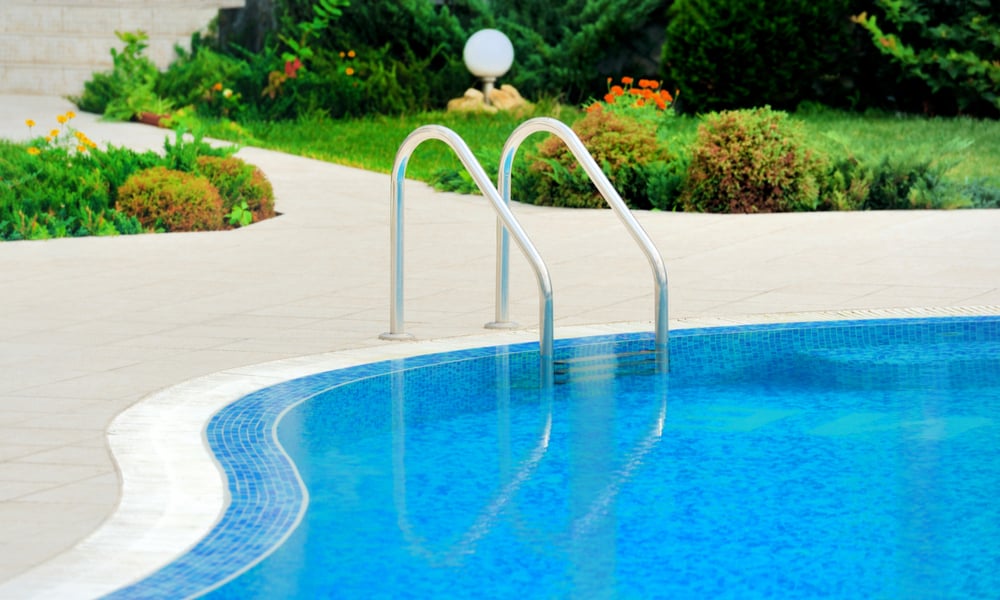
2. Deep Clean
To preserve balanced water chemistry and prevent things like mold and algae growth, your pool should be cleared of leaves, silt, and other debris before closing up for the winter.
- Use your skim nets to eliminate surface debris.
- Use a pool brush with a telescoping pole to scrub the walls and floor and to get into any tight spaces that need to be cleaned.
- Use a pool vacuum to clear all detritus that got kicked up during the scrubbing process.
- Use an algae brush to scrub the pool walls and clean stubborn algae stains.
Cover your pool between doing the next steps to prevent it from getting contaminated again.
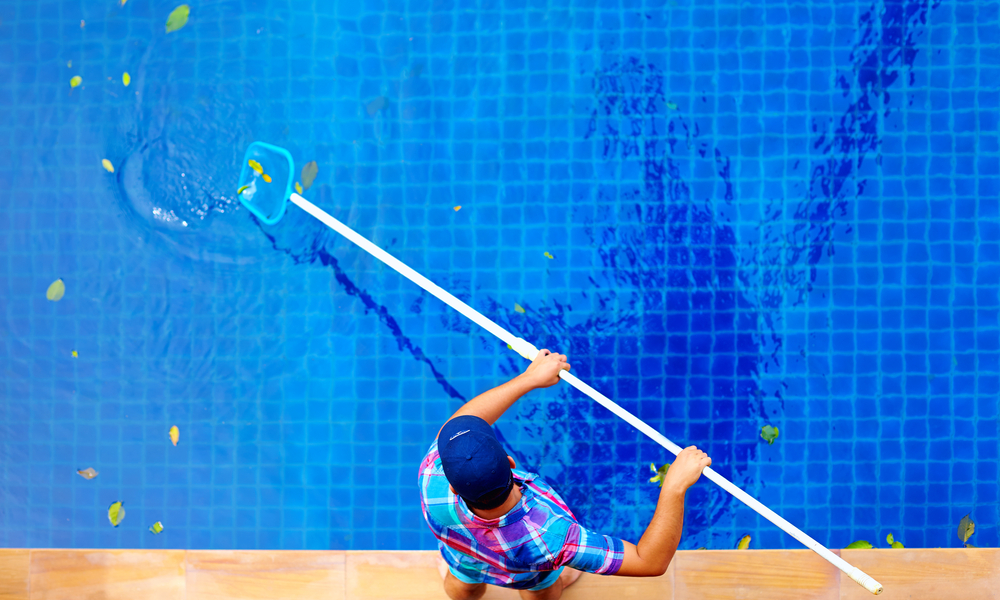
3. Adjust Water Chemistry
About a week before closing your pool, you’ll need to test the chemistry to make sure the following criteria are met:
- Alkalinity should be between 80 and 150 parts per million.
- The pH level should be between 7.2 and 7.6.
- The calcium hardness level should be between 175 and 225 parts per million.
- Chlorine levels should be between 1 and 3 parts per million.
Make any adjustments as necessary. If you’re unsure, err on the higher side of these measurements since they’ll naturally decrease over time.
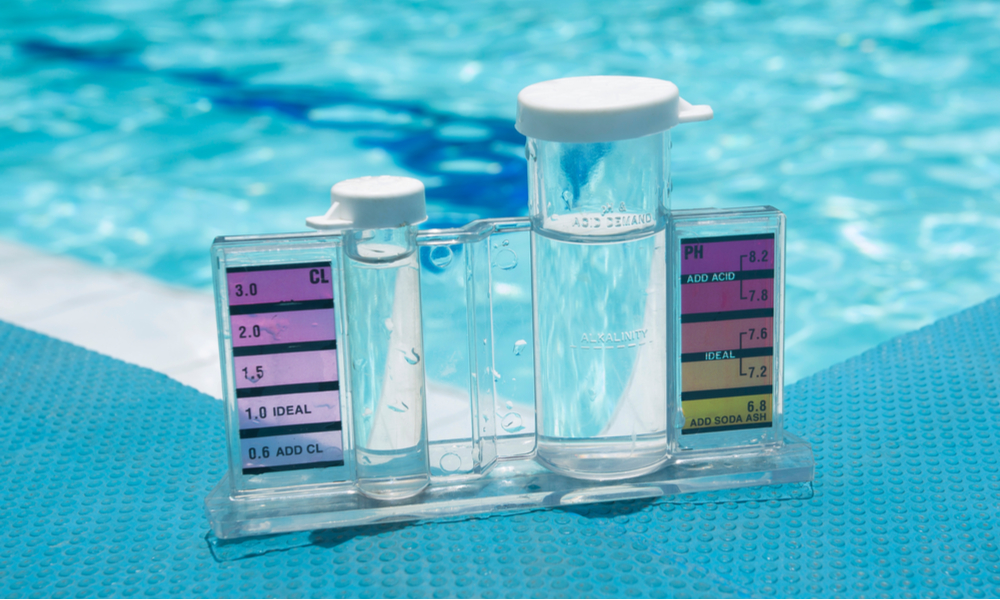
4. Lower the Water Level
Removing water at the end of the season prevents damage caused by freezing temperatures.
Water levels should be beneath any tile borders, or at the bottom edge of the skimmer.
If you have thaws or your region of the country is prone to rainy winters, it’s a good idea to check water levels regularly.
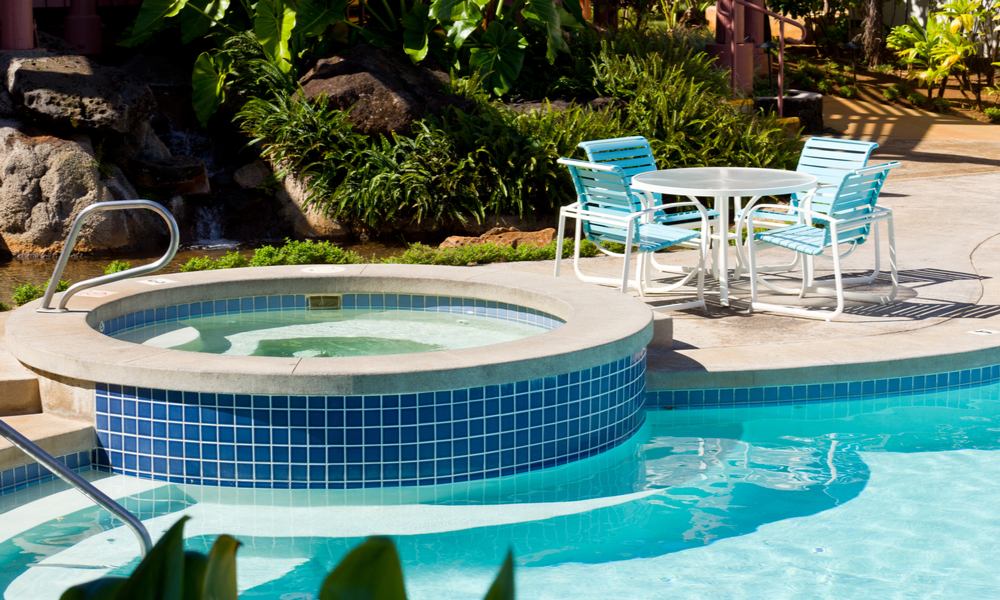
5. Add Shock & Algaecide
Shocking the pool by adding either chlorine or non-chlorine chemicals helps prevent the propagation of things like algae, bacteria, and chloramines. Be sure to put on protective eyewear and gear.
If you’re using chlorine to shock the pool, do not add algaecide simultaneously.
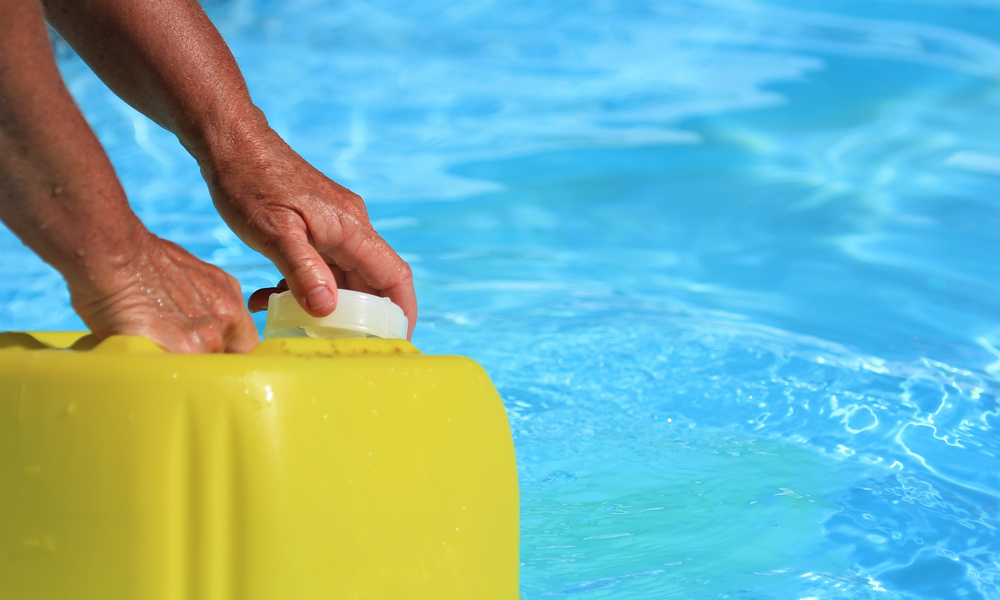
6. Drain Equipment and Store Away
To prevent ice from building up inside of units and cracking them, remove drain plugs and drain every filter, pool pump, and heater. Remove and clean all filters.
Store away your equipment in a dry place indoors, all together so it’s ready for you when you open your pool in the spring.
If temperatures get low where you live, insert expansion plugs, or winterizing plugs, and add in-ground pool antifreeze to your pool’s skimmer line and return line to prevent damage caused by freezing water.
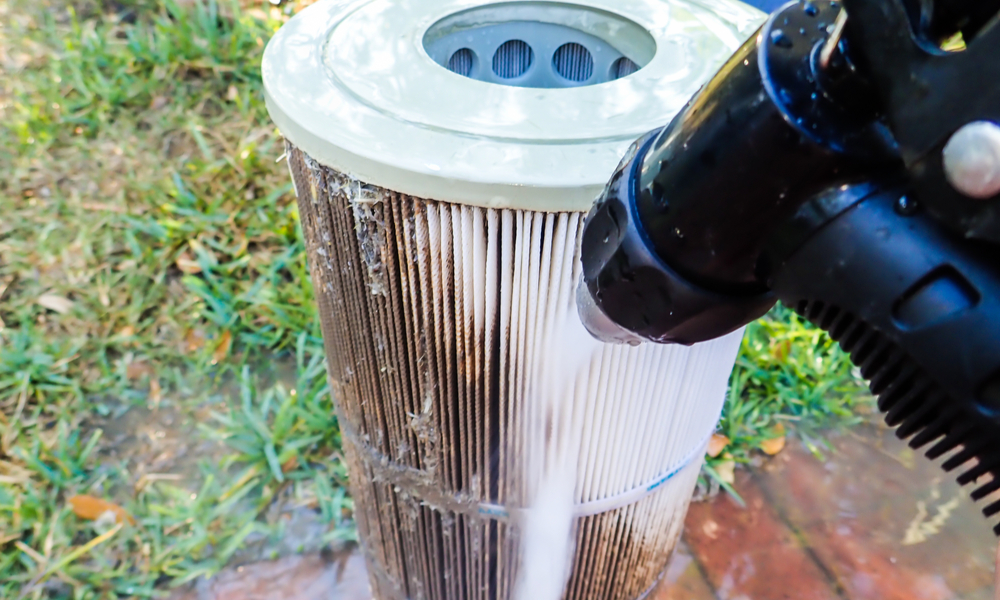
7. Blow Out Your Pool Lines
It’s a good idea to blow out your pool lines while winterizing your pool. The purpose is to get rid of residual water in your plumbing, which can freeze during winter and damage your circulation system.
Use an air compressor or a wet-rated shop vac to blow out pool lines. Start by blowing out the suction side, then blowing through the pump and filter valve, then blowing out the pressure side.
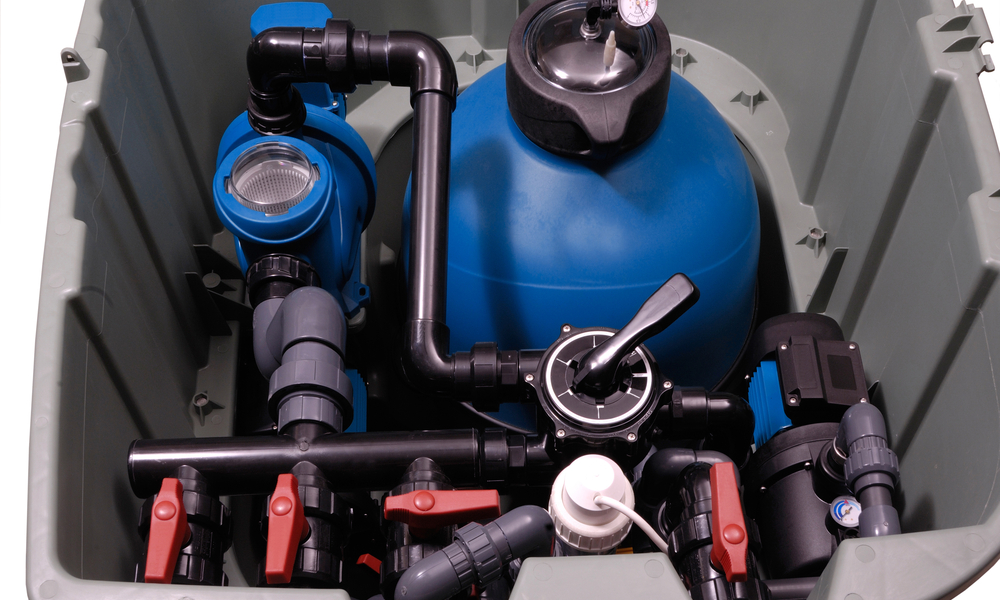
8. Cover the Pool
Winter covers help keep debris out of the pool, block sunlight to decrease algae growth, and save you a lot of maintenance when it's time to swim again.
Alternatively, you can block debris and sunlight with a safety cover. Although harder to install, safety covers prevent children and pets from tumbling into the pool
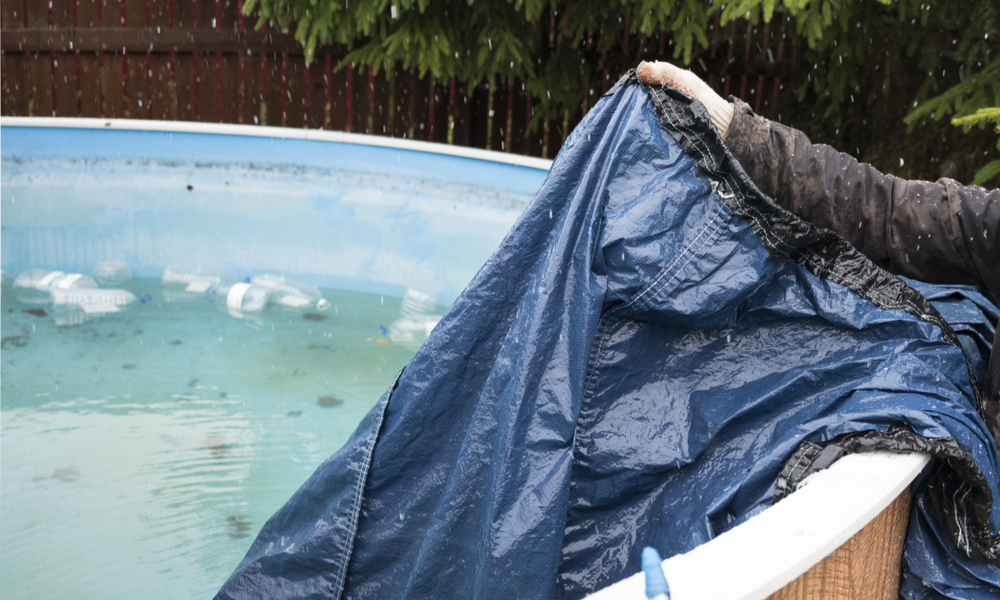
Winterizing an Above-Ground Pool
Winterizing an above-ground pool is similar to the steps above for a ground pool. The difference is you'll disconnect hoses and plug outlets (instead of blowing out pool lines) to keep the plumbing from freezing.
You'll also want to install an air pillow under your pool cover in order to absorb expansion of ice, which can split the pool wall.
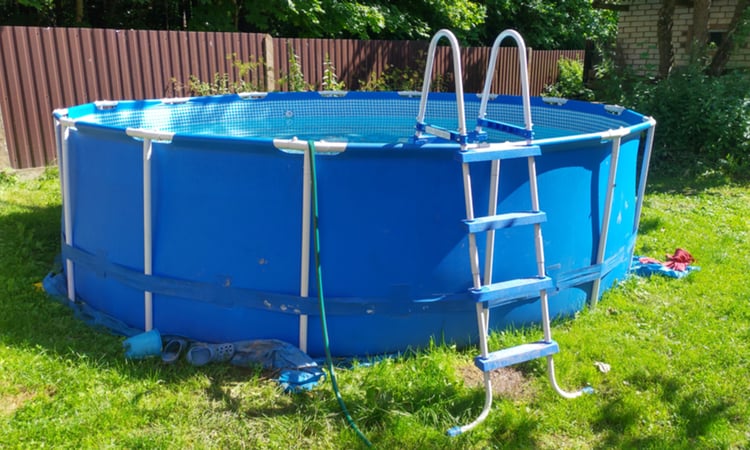
Check Your Pool After Covering
One huge mistake pool owners make is they don’t check the water during winter months when the pool is covered. Among all the other hazards listed above, not doing so can damage the plaster.
Many pool owners either don’t remember or don’t want to check water levels throughout the winter season. And for others, the idea of closing a pool is daunting.
That’s where Spartan Pool & Patio can help. We can perform regular winter checks for you and help protect your pool and equipment from the damage that comes with freezing temperatures.
Why not contact us today to see how we can help winterize your pool?

